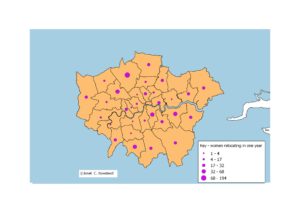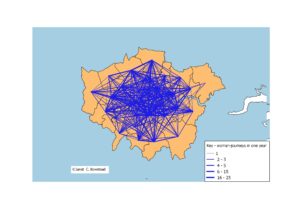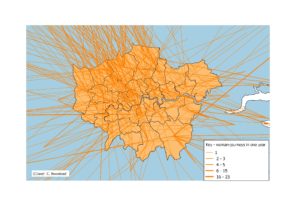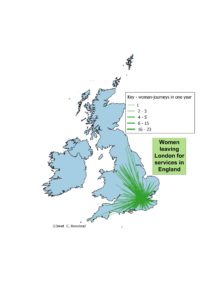At the European Conference on Domestic Violence in Porto this month[1], there were quite a few presentations about women on the move due to domestic violence… but not many that really explored the overall trajectories of women’s journeys. Rather than focusing on the complexities of women and children travelling over distance and time, they tended to focus on particular segments of the journeys, such as when women accessed services. As a result, they often looked at the journeys from the perspective of agencies, services and authorities… rather than from the perspective of women and children themselves.
One segment of women’s journeys that was focused on was a stay in a domestic violence shelter or refuge, with presentations from Portugal, United Kingdom, Norway, Finland, Austria, Canada and Sweden. However, though the terms “refuge” and “shelter” are often used interchangeably, these services are very different in different countries. And so women and children’s experiences are likely to be very different if they are staying in a shelter in, say, Finland – for 14-21 days – than if they are staying for six months or more in a refuge in the UK.
Women Against Violence Europe (WAVE) report[2] that the maximum period of stay for women and children varies enormously – from 4-6 weeks in some countries, to up to 12 months in others. Clearly some of these services are seen as acute and crisis support, without time for longer term recovery and independence.
The key question is who decides the length of stay?
Who is in control of this stage of women and children’s journeys away from abuse?
As WAVE report: “No country mentioned that women survivors of violence and their children, if any, had the right to stay as long as needed, which would be the standard of a human rights-based and gender-sensitive approach”. They argue that “Restrictions on the right to stay are especially problematic if there are no housing programmes guaranteeing permanent or even temporary housing for women leaving shelter.” “If a woman is exposed to the same situation of violence after her stay in shelter, the State and society have failed to guarantee her right to live free from violence.”
If women and their children can only stay a few weeks in a domestic violence shelter, where do they go next?
[1] http://www.fpce.up.pt/iiecdv/about.html
[2] WAVE. 2016. WAVE Report 2015: On the Role of Specialist Women’s Support Services in Europe. Vienna, Austria: WAVE Co-ordination Office. https://www.wave-network.org/resources/research-reports.





